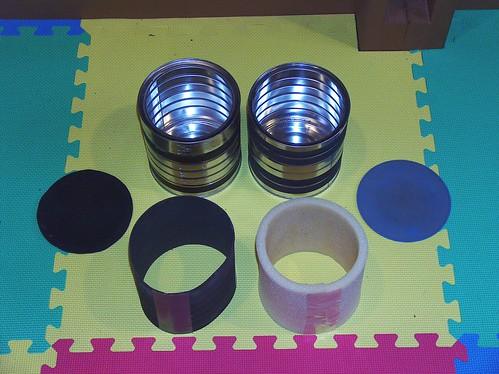thebigunit
Member
- Joined
- Feb 5, 2013
- Messages
- 10
got a bunch of AE 5.56 LC brass that was fired in my stag and mp15. brass is mostly LC 11 and was from two multi box purchases. I checked about 20 pieces of brass shot from both guns and measurements were in the same range for both. all the brass is mostly in the +.0025 to .0035 range over minimum chamber based on set up gage, with an occasional piece closer to .000 or .005. according to instructions, I should bump .004-.006 for auto loader based of the largest DL(.005) which should move me back to -.001 to .001.
I'm getting most of my pieces to size back to desired bump but then I'm getting a piece that moves back -.004 and sometimes with little to no bump. I'm using my Redding T7 and very lightly coating cases with Imperial. There seems to be no correlation between ease or resistance when sizing to the amount of bump.
I've cleaned the dies several times to make sure nothing inside was causing this. I then decided to size using a small base redding, redding body with lee collet neck sizer and RCBS FL die to see if there was any difference and to check neck concentricity between the 3. run-out for the redding body/lee collet and the rcbs FL sizer staying in the .000-.001 range while the redding small base was noticeably off more in thee .002 to .004 range. I assume that is possibly due to the .002 extra body sizing of the small base die and brass movement resulting.
I check the pieces that bump over/under desired amount and they easily fit in my Wilson headspace gage and chamber in both guns. I know that I am using brass from two different guns and potential chamber variance, etc and the the new brass hasn't fully formed.
I have tried to induce a situation to get the comparator to take different measurements but have been unable to do so. Tightened my turret and linkage bolts just to make sure but didn't seem to move any.
Is this an example of, "The more you know, the less you know?"
what is causing these shoulder bump variances? different brass hardness? brass movement due to one chamber having slightly larger body area of chamber?
did a search and didn't find anything and not in any of my manuals that I could find.
so any help would be appreciated. I would like to better understand what I am actually doing and know that I have a lot to learn.
I'm getting most of my pieces to size back to desired bump but then I'm getting a piece that moves back -.004 and sometimes with little to no bump. I'm using my Redding T7 and very lightly coating cases with Imperial. There seems to be no correlation between ease or resistance when sizing to the amount of bump.
I've cleaned the dies several times to make sure nothing inside was causing this. I then decided to size using a small base redding, redding body with lee collet neck sizer and RCBS FL die to see if there was any difference and to check neck concentricity between the 3. run-out for the redding body/lee collet and the rcbs FL sizer staying in the .000-.001 range while the redding small base was noticeably off more in thee .002 to .004 range. I assume that is possibly due to the .002 extra body sizing of the small base die and brass movement resulting.
I check the pieces that bump over/under desired amount and they easily fit in my Wilson headspace gage and chamber in both guns. I know that I am using brass from two different guns and potential chamber variance, etc and the the new brass hasn't fully formed.
I have tried to induce a situation to get the comparator to take different measurements but have been unable to do so. Tightened my turret and linkage bolts just to make sure but didn't seem to move any.
Is this an example of, "The more you know, the less you know?"
what is causing these shoulder bump variances? different brass hardness? brass movement due to one chamber having slightly larger body area of chamber?
did a search and didn't find anything and not in any of my manuals that I could find.
so any help would be appreciated. I would like to better understand what I am actually doing and know that I have a lot to learn.

